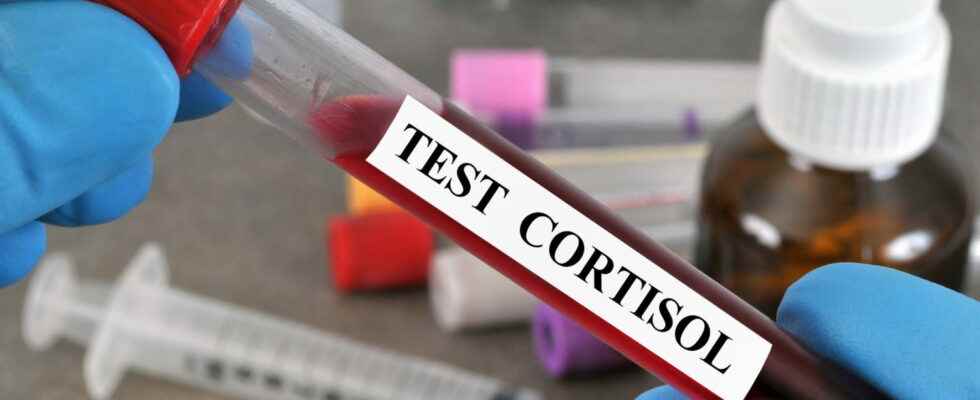Cortisol levels -considered the stress hormone- vary throughout the day. When to do a dosage? How to lower it? Definition, function, standards, low or high rate…
The cortisolemia means an examination intended to measure the level of cortisol in the blood. Cortisol is one of hormones secreted by the adrenals, small glands located in the kidneys. It plays an essential role in the metabolism of carbohydrates and lipids. Understand your cortisol level with Dr François Blanchecotte, President of the Syndicat des biologistes.
the cortisol is the main glucocorticoid hormone, secreted by the adrenocortical glands. She permits regulation of carbohydrates, lipids, proteins, ions and water to limit any variation in the body’s physiological balance. It should be noted that it intervenes in the management of stress by the body (eg reaction and adaptation of the body in the face of a danger). She permits release of blood glucose levels to nourish the muscles, the heart, the brain, in a situation of prolonged stress.
“It is the part of cortisol that passes into the urine, biologically active and we can thus dose an excess of cortisol” explains Dr. François Blanchecotte.
It’s about blood cortisol level test. “Plasma or serum cortisol depending on whether blood is taken from a tube with anticoagulant or a dry tube“, underlines the president of the union of biologists.
“The interest of saliva would be for a patient from whom we cannot take blood, but it is a little used dosage” nuance Dr. François Blanchecotte.
“The physiological effects of cortisol is that it acts on all sugars, proteins, lipids. It has anti-inflammatory properties and it is immunosuppressive. It is said to be the wake-up hormone, but in actually that’s not quite true“, observes the specialist.
A blood cortisol test may be prescribed to highlight possible dysfunctions of the adrenal cortex. It follows a circadian rhythm, it is maximum between 6am and 8am. The exam consists of a blood sample taken on an empty stomach in the morning.
In men, women and children, normal cortisol levels depend on the time of sampling. At 8 o’clock, the value must be between 275 and 685 nmol/lat 12 p.m., it must be between 190 and 468 nmol/l, at 4 p.m., it must be between 165 and 300 nmol/l, at 8 p.m., it must be between 110 and 250 nmol/L and at midnight, it must must be between 55 and 190 nmol/l.
Cortisol levels may decrease (hypocortisolemia) in patients with adrenocortical insufficiency, impaired pituitary or hypothalamus function, or Addison’s disease.
It can increase (hypercortisolemia) during hypercorticism, Cushing’s disease (excess secretion of an adrenocortical hormone),adrenal adenoma, adrenocortical tumour, anorexia, cirrhosiscertain neuropsychiatric diseases, myocardial infarction or stroke.
Thanks to Dr François Blanchecotte, President of the Syndicat des biologists.
